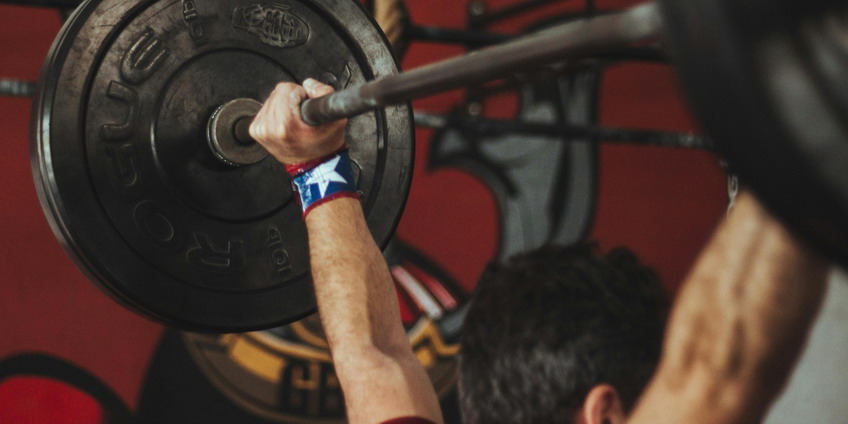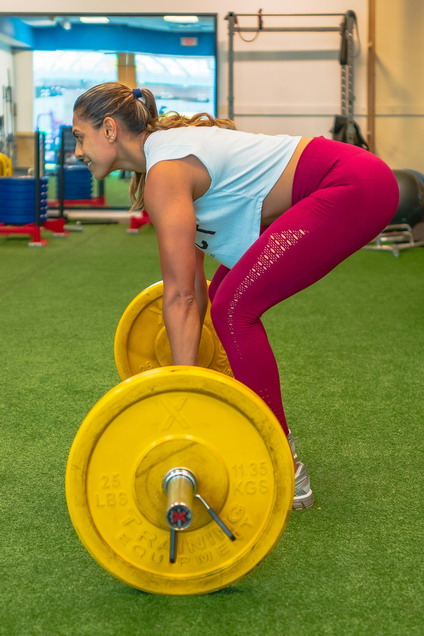010. Different Types of Power

We are familiar with strength measurement: athlete who lifts the heaviest weight is the strongest one. Deadlifters don’t care about the time when they lift. There is no rush, because time and speed of the movement are not measured, only weight on the bar counts. When the lifting speed is close to zero, we can consider it to be a demonstration of pure human strength. In that case, the athlete demonstrates a strength dominant power.
We are also familiar with speed measurement: sprinter who finishes the race in shortest time is the winner and the fastest one. Sprinters are not carrying any additional weight, so their strength is not measured. The only thing that matters is time and therefore, speed. When the additional weight is practically nonexistent, we have a manifestation of pure human speed. In that case, the athlete demonstrates a speed dominant power.
Other cases of power exhibition are falling somewhere between these two extremes, which means that both components of power are engaged to some notable extent, at the same time. However, there are a few kind of untypical sports for power showcasing.
For example, bodybuilders intentionally choose sub maximal weights to be able to do more volume (sets and reps). While, powerlifters lift slowly, because the weight is way too heavy to be lifted any faster, bodybuilders intentionally lift slowly to increase time under tension, deplete energy and achieve pump. Bodybuilder’s goals are muscle size and aesthetics, not maximal strength. Both sports exercise strength dominant power, but bodybuilders intentionally keep their power at reduced levels.
Another untypical example are martial artists, who move quickly inside the ring and have very fast kicks and punches. Their power falls into speed dominant group, although there is no significant body displacement and their running speed is totally irrelevant. In this case, running speed is replaced with limb agility (sudden moves and swift changes of movement direction).
Regardless of strength and speed engagement in power output, energy is always involved. Without energy, there would be no power, no force generation, no work would be done and there would be no movement. Power as the rate of energy transfer is described with the following equation:
As we can see, power is affected by time during which the energy is transferred. If time of energy transfer is very short or near zero, power automatically reaches the maximal possible level and it is then called peak power. If the time of expending energy is prolonged, then the power output is lower, but lasts during whole interval of time.
- Peak power is the maximal power that could be generated for a short moment of time.
- Continuous power refers to total amount of power that could be produced continuously over longer period of time.
Think about Olympic weightlifters. They burst in a fraction of a second and lift enormous weight up to the overhead position. This wouldn’t be possible if they tried to lift slowly, without help of the momentum, neither they would be able to lift such huge weight for repetitions, since a lot of energy has already been spent in the first rep. Therefore, Olympic weightlifters are the masters of peak power.
Now let’s take a look at strongman behemoths. They are strong, fast and capable to maintain high power output for longer periods of time or for repetitions. Also, they have a very high energy capacity and usually deplete it all in each discipline. In other words, they have to be able to pick up heavy objects, then to move them as quickly as possible and sustain the continuous power output to finish each discipline. Therefore, strongman competitors are the kings of continuous power.
Another representation of power could be expressed with the following equation:
As we can see, power could be defined as amount of work done during time interval. Work and time are the two variables influencing the power output. The equation implies that more work results in more power and finishing the work in less time also results in more power. The difference is that more work leads to higher continuous power output, while shorter time interval leads to higher peak power output.
Let’s get back to Olympic weightlifters and strongman competitors. Olympic lifts are performed in shortest possible time, while the work has a fixed value - lifting constant weight to constant overhead height. Time is the variable and the shorter the lifting time gets, the more powerful athlete becomes. Also, the barbell has to travel over shortest possible distance and that’s why the perfect barbell trajectory is such a big deal in Olympic weightlifting.
Now, the strongman competitor first has to be strong enough to pick up a heavy object and then be able to accomplish the task over distance (like yoke), for repetitions (like car deadlift) or for time (like atlas stones). Reaching longest distance, accomplishing the most reps or finishing the task in shortest time, means more power exertion in that particular discipline.
Here are the specific sports as examples for each type of power:
• Peak power, single repetition at max strength, low energy demand: Olympic weightlifting, powerlifting.
• Peak power, single repetition at max speed, low energy demand: jumping, throwing.
• Continuous power, multiple repetitions at high strength level, high energy demand: strongman, rowing.
• Continuous power, multiple repetitions at high speed level, high energy demand: sprint, boxing.
• Continuous power, multiple repetitions at low strength levels, low speed level, ultra high energy demand: marathon, triathlon.
Please note that by sprint it means any kind of sprint: running, cycling, swimming.
WARNING: Serious training for real peak power can lead to injury. To stay on a safe side, simply train with submaximal weights. This applies for powerlifting and Olympic lifts as strength dominant peak power sports, but similar logic applies to speed dominant peak power sports. Train at submaximal speeds and don’t worry about injuries. Keep in mind that involving higher number of repetitions and prolonging power exertion time will get you closer to training for continuous power, which is significantly safer then training for peak power. Just never push yourself to the limit of any kind. Stay away from maximal weight and top speed to avoid injuries, but also never completely exhaust your energy, to avoid physical and neurological collapse and overtraining.


Add comment
Fill out the form below to add your own comments